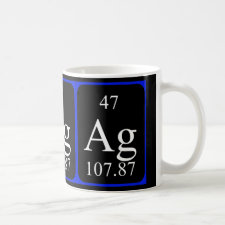
Authors: Sarkaya K, Demir A
Article Title: The comparative investigation on synthesis, characterizations of silver ion-imprinting and non-imprinting cryogels, their impedance spectroscopies and relaxation mechanisms.
Publication date: 2019
Journal: Polymer Bulletin
Volume: 76
Issue: (11)
Page numbers: 5701-5716.
DOI: 10.1007/s00289-018-2657-7
Abstract: In the present study, a novel ion-imprinting and non-imprinting cryogel samples have been prepared using ion-imprinting technique and the dielectric properties have been investigated using an impedance spectroscopy method. In the preparation of ion-imprinted cryogel, at the first attempt, N-methacryloly-(l)-cysteine methyl ester was used as the metal complexing monomer. Ag+-imprinted poly(hydroxyethyl methacrylate-N-methacryloly-(l)-cysteine methyl ester) cryogel was produced by bulk polymerization. Poly(2-hydroxyethyl methacrylate) was selected as the basic matrix by considering properties, high chemical and mechanical stability. After removal of template (silver ions), the ion-imprinted cryogel was used for the removal of photo-film-containing materials. The dielectric properties of cryogel samples have also been investigated by impedance spectroscopy within the frequency range of 1 Hz-10 MHz. The real part of the permittivity increases at low frequencies as electrode effects become dominant. It shows a constant value at high frequencies due to dipole polarization. On the other hand, the imaginary part does not show a relaxation peak as the relaxation time of samples is very short. The frequency dependence of electrical modulus has also been investigated. The real part of electrical modulus (M' (f)) is an indicative of negligible electrode polarization phenomenon in the test material. The behavior of the imaginary part of frequency dependent electrical modulus (M" (f)) exhibit that the dielectric relaxation process is usually not frequency-activated state. Dielectric relaxation process occurs spontaneously due to the hopping mechanism of charge carriers
Template and target information: silver ion, Ag(I)
Author keywords: Cryogel, N-Methacryloly-(l)-cysteine methyl ester, Ion-imprinting, molecular imprinting, polymers, Dielectric properties, Electrical modulus



Join the Society for Molecular Imprinting

New items RSS feed
Sign-up for e-mail updates:
Choose between receiving an occasional newsletter or more frequent e-mail alerts.
Click here to go to the sign-up page.
Is your name elemental or peptidic? Enter your name and find out by clicking either of the buttons below!
Other products you may like:
 MIPdatabase
MIPdatabase









